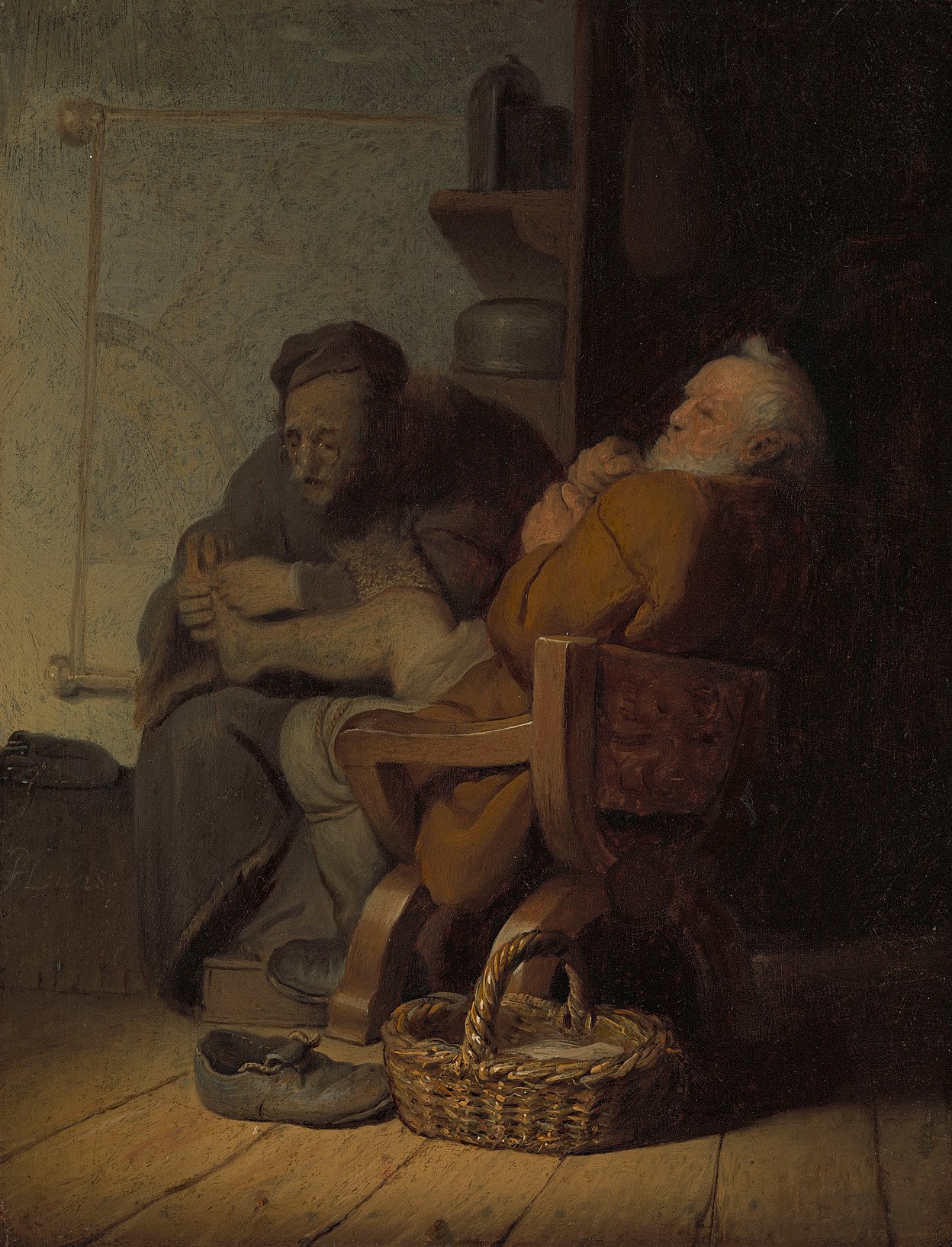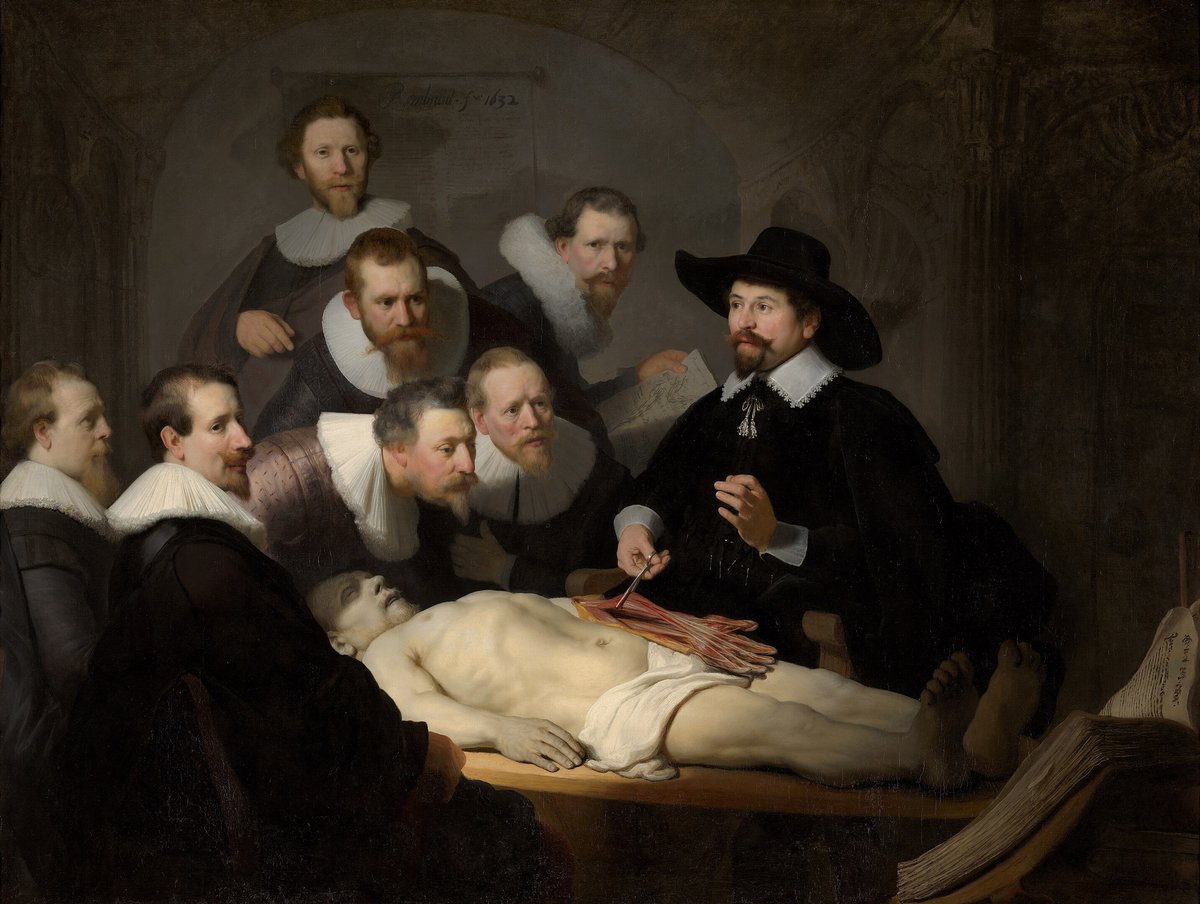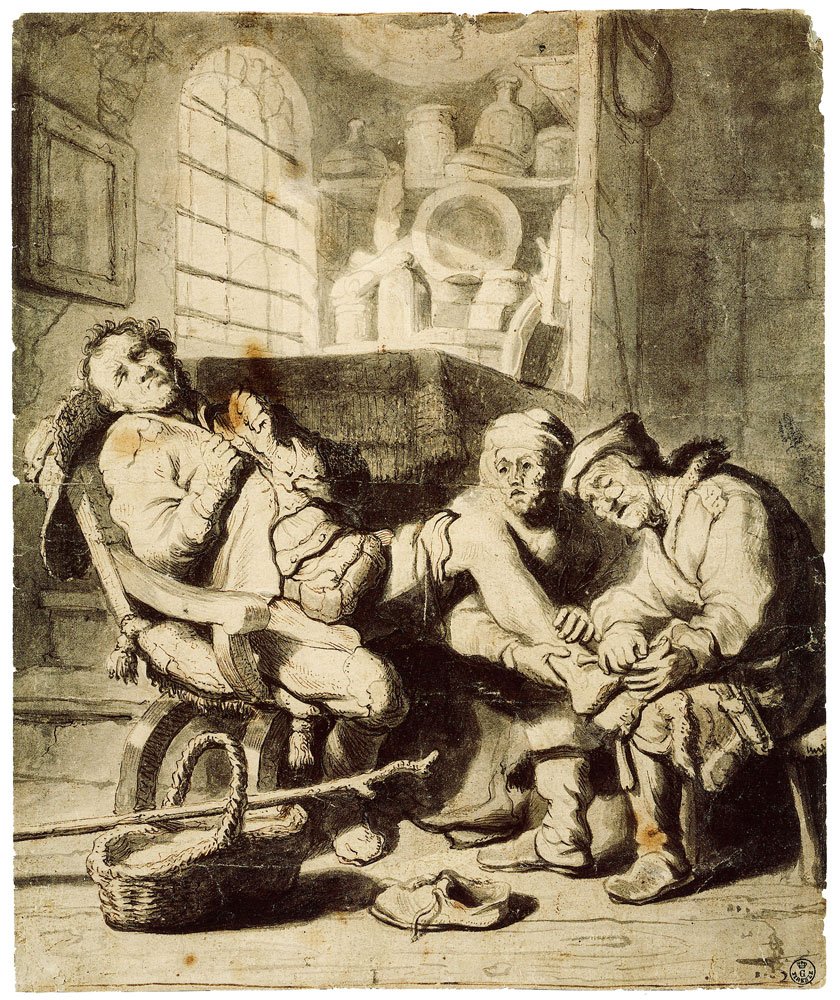Rembrandt van Rijn
The Foot Operation, 1628

Rembrandt Harmensz. van Rijn
The Foot Operation, 1628
Kunst Museum Winterthur, Dauerleihgabe aus Privatbesitz
Foto: SIK-ISEA, Zürich (Philipp Hitz)
After his apprenticeship under Pieter Lastman, Rembrandt returned to his native Leiden in 1625 and began to intensively occupy himself with physiognomic representations. The Foot Operation is a wonderful example of this. The focus here is on the duality of the two protagonists. The operation itself is not really visible, but the concentrated gaze of one and the cramped posture of the other are.

Rembrandt van Rijn, The Anatomy Lesson of Dr Nicolaes Tulp, 1632
Commissioned by members of the Surgeons’ Guild, Amsterdam, 1632; Surgeons’ Widows’ Fund, Amsterdam, 1798-1828; purchased by the Dutch State and placed in the Mauritshuis at the order of King William I, 1828
Surgical operations were a popular subject in 17th-century Dutch genre painting. They allowed artists to depict the facial expressions of the protagonists in a particularly pronounced way, while also turning the viewers into shuddering voyeurs. Medicine was a popular subject at the time, and people even paid to attend public dissections – Rembrandt himself painted his famous Anatomy Lesson of Dr Tulp, which shows just such a scene, shortly after moving to Amsterdam. In this representative group portrait of Amsterdam surgeons, the lighting plays a special role, as it does in our painting.
Here, the warm browns of the floor, basket, and coat make the patient stand out clearly against the dark background, accentuating the tension in his face. As if in a spotlight, his shoe and basket form a small still life as an introductory highlight in the foreground. In this case, the empty basket may suggest that the patient had been robbed. In contemporary painting, such scenes often depicted naive people being taken advantage of by quacks. This thematization of deception also ironically refers to the painter himself, who, with his illusionist art, is also a kind of deceiver.
Interestingly, until a few years ago this painting was not considered to be by Rembrandt. It was attributed to someone in his immediate circle. Among others, his painter friend Jan Lievens was suspected of being the possible artist, who, like Rembrandt, still lived in Leiden at the time and cultivated quite a similar style. There is also a drawing by Lievens with a highly similar subject. However, both the painting and the drawing are more likely to be seen as an allusion to their shared beginnings and mutual inspiration. This is because the large-scale Rembrandt Research Project in Amsterdam, which has been cataloguing all Rembrandt paintings since 1968, was able to identify the painting as a work by the master based on an examination of the signature «RHL» (Rembrandt Harmenszoon Leidenensis).

Jan Lievens, The Foot Operation
Foto: PubHist


